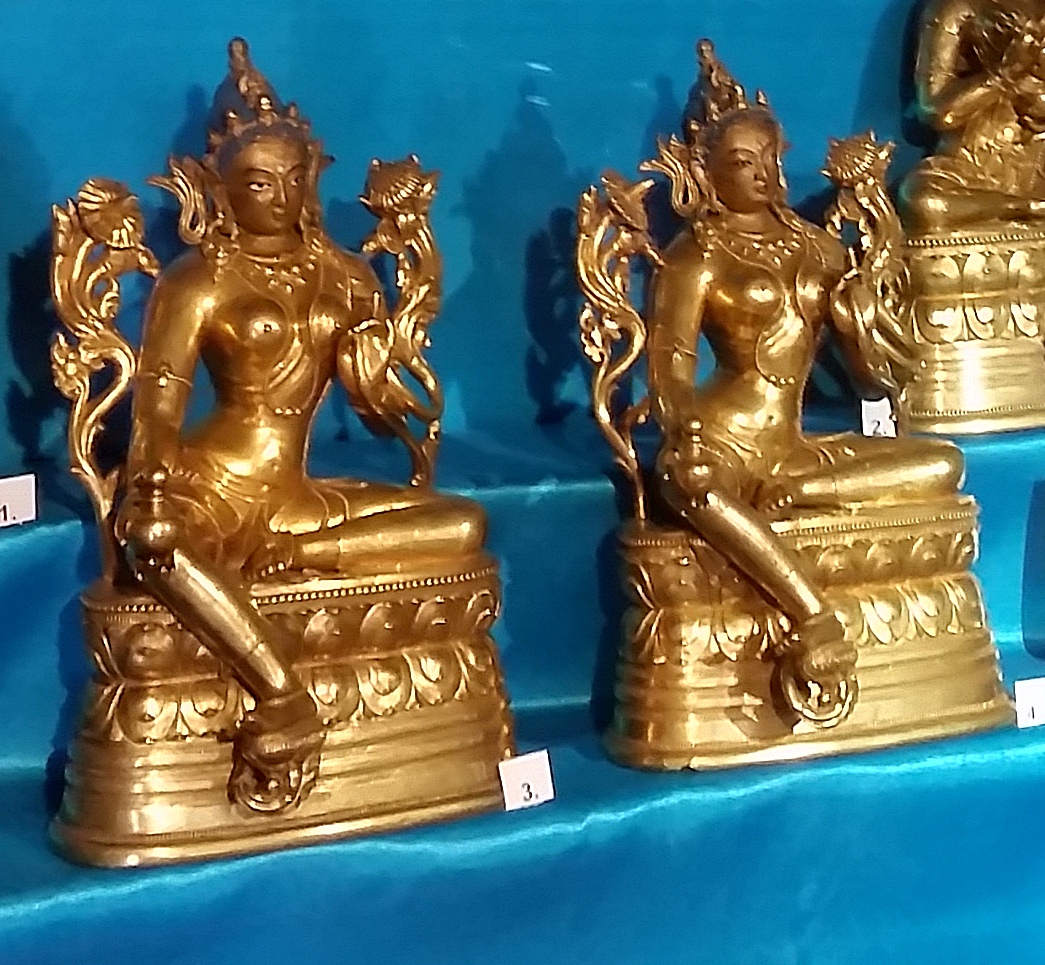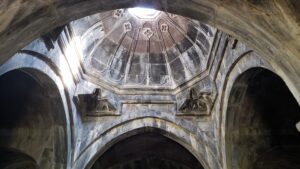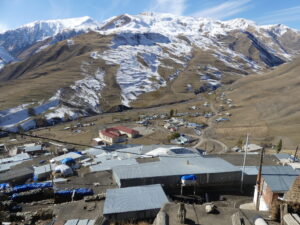In brief: The 17th c. monk Zanabazar has become a fitting hero for the newly independent Mongolian people, one whose legacy has been spiritual, practical and artistic.
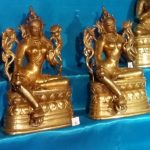
Born in 1635 in Tibet, Undur Gegeen Zanabazar was a prodigy in languages and Buddhist teaching, an incarnation, it was said, of a revered Tibetan lama. He was even a descendant of Chinggis (Genghis) Khan, the builder of the vast Mongolian empire in the 13th century.
Early in life, Zanabazar came to Mongolia as a great teacher, adapting and spreading the resplendent Tibetan school of Buddhism into Mongolia. He is still honored in temples across the country, as Buddhism revives from the literally crushing impact of socialism and Soviet Russia. Over a thousand Mongolian temples and monasteries were destroyed in the 1930s and 1940s.
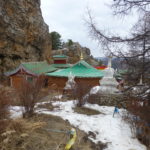
Among them was Zanabazar’s own monastery, Tukhvun, built over 300 years earlier in 1653. The monastery was tucked in the crevices of a rocky peak high above the fertile Orkhon Valley on a forested mountain. Tukhvun offered a refuge for prayer and monastic teaching, a natural site for meditation as well as a studio to create religious art. One of its temples was said to have been built by Zanabazar’s own hand.

The few main temples at Tukhvun were restored after 1997, following Mongolian independence and the revival of Tibetan-Buddhist religious practice and art. A cadre of monks still study his teachings there. Many others come for meditation at a place that feels transcendent. But Zanabazar’s most important legacy may be his artistry.
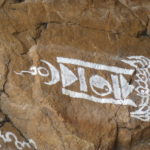
Here at Tuhkvun, he designed the Soyombo emblem, a visual statement of his beliefs, and now the symbol of the country. At the top, emblems of the sun and moon are joined together, surmounted by a flame to show the search for enlightenment. Between two bars like the walls of a strong fort rests the yin-yang union of opposites. Above it, an arrow points down to a bar and, below it, an arrow points down from another bar, like the hand of the victorious Buddha in statues. These suggest the defeat of enemies, mortal or spiritual.
Zanabazar also designed a Mongolian alphabet based on Sanskrit, an alphabet still studied in school though superseded in everyday life by the Cyrillic alphabet imposed by Russia.
He developed a method of creating statuary in bronze with a single hollow cast, eschewing the typical technique of soldering pieces together. But it’s the aesthetic wonder of his pieces that elevates his work. His bronze taras (goddesses) and buddhas conform to all the norms of Buddhist art, but with an extraordinary delicacy and transcendence. They typically wear ornate but restrained crowns and other jewelry. Their idealized slender torsos mimic the sinuous elegance of a crane. Though they rest solidly on a lotus base, they also seem to float on it.
And then there are the faces. His figures feature a sublimely peaceful expression, at one moment beyond us in divinity and at another at our side, embracing us, emanating a very human graciousness.
One of the finest examples we saw was the tantric union of a serene Buddha with a lithe consort at the Chojin Lama monastery in Ulaan Bataar, one religious center that survived destruction. The statue captured an endless moment both sensual and otherworldly, the transformation inherent in the union of opposites or conjoined male and female principles.
Many followers, the School of Zanabazar, used his techniques and imitated his style, but none of the examples we saw came close to the master.
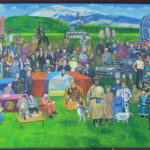
In a country finally independent again, one expects admiration for political leaders like Chinggis Khan, Sukhbaatar, the leader of the independence revolution in 1921, and Bogd Khan, the last king who oversaw independence from China. Under Soviet Russian control, Mongolia was progressively robbed of its heritage for centuries and nearly bankrupted by the early 1990s. By honoring such heroes, the Mongolian people have aimed to renew their pride and succeed as a modern nation.
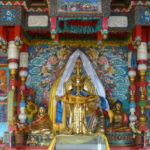
The veneration of Zanabazar, however, revives their religious heritage as well a cultural heritage never really lost. Bogd Khan himself subsidized a horde of artisans at his summer palace in UB to create magnificent thangkpas (religious wall hangings) for public and private meditation. He collected numerous statues of buddhas and bodhisattvas designed and cast by Zanabazar himself. Several are displayed at his former palace and at the Chojin Lama monastery he built, including that tantric statue in a hexagonal, cave-like temple dedicated to the master artist.
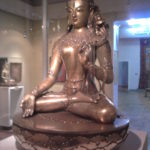
The pictorial heritage of the country is fully on display at the Fine Arts Museum named in honor of Zanabazar. The highlight here, unsurprisingly, is a room full of his statuary, as well as that of his followers. His White Tara sits magnificently in the center of the room.
But we could also see some of the best of the national collection of thangkpas. A series of rooms showcases the various artistic techniques mastered by religious artists of the country. These techniques included painting on cotton fabric, silk weave – and most notably silk applique, where layers of woven silk pieces are sewn onto others to create an image rich in overlaid patterns and forms.
This art and artistry is a living legacy. Today, as at Bogd Khan’s court, amateur and professional artisans still create thangkpas and other silken goods. During the virtual bankruptcy of the country in 1990 after Russian withdrawal, many families survived by creating and selling the exquisite silk thangkpa to wealthy Chinese. Many still do.
What better hero, it seemed to us, for living in the modern world: a man devoted to the transcendent who guided others through the hard medium of bronze with fervor and artistry. A man who transmitted the practicality of a written language to his country and forged the Soyombo, the symbol of a free nation.
[White Tara, image courtesy of Lady Anu – Own work, CC BY-SA 3.0, https://commons.wikimedia.org/w/index.php?curid=13277459]
(Also, for more pictures from Mongolia, CLICK HERE to view the slideshow at the end of the itinerary page.)


